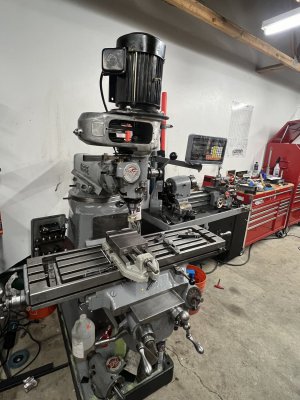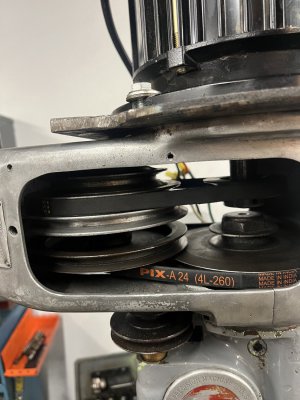- Joined
- Oct 12, 2023
- Messages
- 35
so I am building a new belt and pulley housing/motor mount and I have all the speeds and torque I could ever need covered by two pulley steps and dialing my vfd between 30-90hrtz. My question is when I make my new setup can I do away with the countershaft design that I’m currently using since I’m not changing speeds via that it’s essentially just reversing the motor direction or is there something magical that creates more torque to a shaft even if it’s going from a 3.5” driving pulley to a “7 driven pulley countershafted driving a 3.5” pulley to a 7” driven spindle?? Will the torque be the same as just a 3.5 to a 7 that’s it. Probably a dumb question but I’d hate to get finished and find out I should have copied the original



